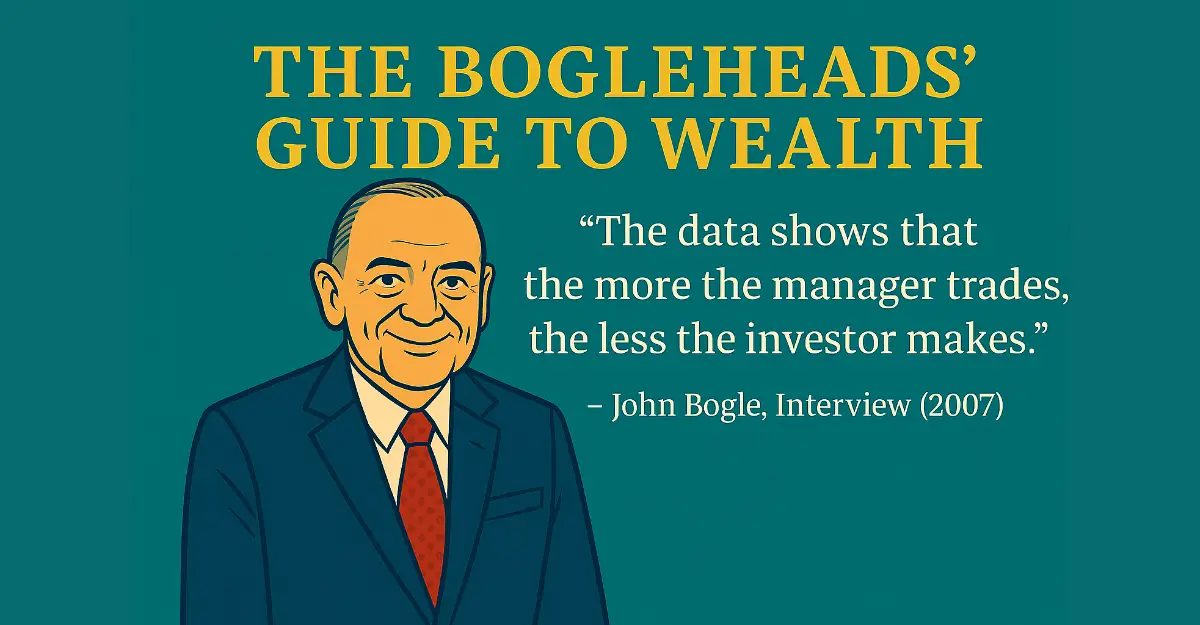Introduction: The Enduring Wisdom of Warren Buffett's Investment Approach
In the ever-evolving world of financial markets, where fleeting trends often dominate headlines, the Warren Buffett investment strategy stands as a testament to enduring principles. Far from chasing speculative fads, the “Oracle of Omaha” has built unparalleled wealth through a disciplined, long-term approach rooted in fundamental business analysis.
For many investors, particularly those managing a complex investment portfolio spread across multiple accounts – perhaps a personal brokerage, a 401(k), an IRA, or even family trusts – the true challenge lies not just in understanding these timeless principles, but in effectively applying them amidst the daily demands of life. This article will thoroughly explore the core tenets of Buffett’s legendary method, dissecting how individual investors can adopt this powerful strategy to build and manage their investment portfolio with greater clarity, purpose, and ultimately, success.
The Pillars of Warren Buffett's Value Investing Philosophy
1. Think Like a Business Owner: The Entrepreneurial Mindset in Action
At its core, the Warren Buffett strategy is a sophisticated application of “value investing,” a philosophy championed by his mentor, Benjamin Graham. It’s about discerning a company’s true worth and investing when its market price offers a compelling discount. Buffett famously doesn’t buy stocks; he buys businesses.
What is Intrinsic Value in Buffett's Strategy?
Intrinsic value is the true, inherent economic worth of a company, independent of its fluctuating market price. For Buffett, understanding and calculating intrinsic value is paramount. He aims to buy companies when their market price is significantly below his estimated intrinsic value, creating an opportunity for future appreciation as the market eventually recognizes the business’s true worth.
Actionable Tip:
When evaluating a potential investment, ask yourself: If I were to buy this entire business outright, would it make sense? Do I truly understand its operations, products, services, and competitive environment? Tools that allow you to analyze a company’s historical financial performance (like detailed revenue growth, earnings per share, and cash flow) are crucial for estimating this intrinsic value.
2. The Enduring Power of the "Economic Moat"
Buffett often discusses the importance of a “moat” – a durable competitive advantage that protects a company’s long-term earnings and market share from competitors. Just as a physical moat protected a medieval castle, an economic moat shields a business from rivals.
Key Characteristics of an Economic Moat:
- Brand Strength: A powerful, recognizable brand that fosters deep customer loyalty and pricing power (e.g., Coca-Cola, See's Candies).
- Cost Advantage: The ability to produce or deliver goods/services at a significantly lower cost than competitors, allowing for higher margins or lower prices (e.g., certain commodity producers or highly efficient logistics companies).
- Network Effects: Where the value of a product or service increases as more people use it, creating a self-reinforcing cycle (e.g., credit card networks like Visa or American Express).
- High Switching Costs: It's difficult, time-consuming, or costly for customers to switch from one product or service to a competitor's (e.g., enterprise software, complex financial services).
- Patents & Proprietary Technology: Legal protections or unique technological advantages that create barriers to entry.
“The most important thing to me is figuring out how big the moat is around the business. What I love, of course, is a big moat that’s getting wider” – Warren Buffett (Source: Berkshire Hathaway Annual Shareholder Meeting, 2007).
Actionable Tip:
Look for businesses that have consistently achieved high return on equity (ROE) and strong profit margins over extended periods (5-10 years). Consistent, superior profitability is often a strong indicator of a resilient economic moat. Evaluate how sustainable these advantages are against potential disrupters.
3. The Crucial "Margin of Safety": Protecting Your Capital
The margin of safety is a foundational principle of value investing, deeply ingrained in both Benjamin Graham’s teachings and Buffett’s practice. It’s your primary protection against unforeseen circumstances and analytical errors.
What is Margin of Safety in Investing?
It’s the principle of buying an investment at a price significantly below its estimated intrinsic value. This discount acts as a cushion, protecting your capital even if the business faces unexpected challenges or if your initial valuation proves slightly optimistic. It ensures that even if you’re not perfectly precise in your analysis, you still have a buffer against potential losses.
“Confronted with a challenge to distill the essence of sound investment advice into a single concept, I would offer the investor the two-word phrase: ‘Margin of Safety.'” – Benjamin Graham (Source: The Intelligent Investor, Chapter 20).
Actionable Tip:
Once you’ve analyzed a business and estimated its intrinsic value, compare it to the current market price. The larger the difference, the greater your margin of safety. This often requires patience, waiting for periods when even high-quality businesses might be temporarily undervalued by the market due to broader economic concerns or temporary setbacks.
5. The Long-Term Horizon: Patience as a Powerful Ally
Buffett’s investment horizon is often measured in decades, not days or months. He isn’t swayed by daily stock price fluctuations, but by the long-term growth and compounding power of the underlying businesses he owns.
“The stock market is a device for transferring money from the impatient to the patient.” – Warren Buffett (Source: The Warren Buffett Way, Robert Hagstrom, citing a common Buffett saying).
Actionable Tip:
Once you’ve made an investment based on thorough fundamental analysis and a comfortable margin of safety, resist the urge to constantly monitor daily price changes. Instead, schedule periodic reviews (e.g., quarterly or annually) to ensure the company’s fundamentals are still strong and your original investment thesis remains valid. This disciplined patience allows the incredible power of compounding to work its magic over many years.
4. Your Circle of Competence: Invest in What You Truly Understand
Buffett frequently emphasizes the importance of staying within your “circle of competence.” This means investing only in businesses and industries that you genuinely understand. It’s not about being an investment wizard, but about having a deep, nuanced grasp of the handful of businesses you choose to invest in.
“What an investor needs is the ability to correctly evaluate selected businesses. Note the word ‘selected’: You don’t have to be right on many things, as long as you’re right on the important ones.” – Warren Buffett (Source: Berkshire Hathaway Shareholder Letter, 1996).
Actionable Tip:
Focus your research efforts on industries you are already familiar with, perhaps from your professional career, hobbies, or daily life. This intrinsic understanding will provide an edge in assessing a company’s management, competitive landscape, and future prospects, thereby reducing your investment risk. Avoid ventures into areas that feel like a “black box” to you.
6. Debt and Diversification: Nuances in Buffett's Approach
While not explicitly a pillar, Buffett’s views on debt and diversification are critical elements of his strategy often discussed in Warren Buffett quotes.
On Debt (Leverage):
Buffett is famously wary of excessive debt, both for individuals and businesses. He often highlights that “I’ve seen more people fail because of liquor and leverage — leverage being borrowed money. You really don’t need leverage in this world much. If you’re smart, you’re going to make a lot of money without borrowing” (Source: 1991 speech at the University of Notre Dame, widely cited). He prefers businesses that generate strong cash flow and can grow without taking on undue financial risk.
Actionable Tip:
When analyzing a company, scrutinize its balance sheet for manageable debt levels. For your personal investment portfolio, avoid investing on margin unless you have an extremely high tolerance for risk and a deep understanding of the associated dangers.
On Diversification vs. Concentration:
This is a frequently misunderstood aspect of Buffett’s strategy. He famously said, “Diversification is protection against ignorance. It makes little sense if you know what you are doing” (Source: Various shareholder meetings and interviews). However, this quote is often taken out of context. Buffett himself, for most investors, advocates broad diversification, often through low-cost index funds. His concentration applies only to investors who truly understand a select few businesses inside and out, like himself and Charlie Munger.
Actionable Tip:
For most individual investors, broad diversification across different companies and sectors remains a wise strategy. If you do choose to concentrate, ensure it is only in businesses that fall squarely within your circle of competence and that you have analyzed extensively.
Enhancing Your Investment Journey: Tools and Practices
Implementing the Warren Buffett strategy effectively requires discipline, thorough analysis, and a structured approach to managing your investment portfolio. For investors juggling multiple accounts, this can sometimes feel overwhelming.
Streamlining Your Portfolio View:
To truly apply Buffett’s principles across all your holdings, a unified view is incredibly helpful. Instead of logging into separate brokerage, 401(k), and IRA platforms, consider utilizing a service that helps you consolidate data from multiple investment accounts in one place. This gives you a holistic snapshot of your entire financial picture, helping you ensure your overall asset allocation and individual company holdings align with your value investing tenets.
Efficient Analysis & Monitoring:
Buffett’s approach relies on deep dives into company fundamentals. Access to comprehensive historical financial data, robust charting tools, and the ability to quickly compare key metrics are invaluable. Being able to visualize trends in a company’s revenue, earnings, and debt over many years, and to monitor performance across your diverse holdings, allows you to conduct the necessary analysis without excessive manual effort. Look for platforms that can automate data refreshing, freeing you to focus on the qualitative research and strategic decisions.
Overcoming the Investor's Greatest Obstacles: Emotion and Impatience
Even with the clearest strategy, human emotions often present the biggest hurdles to investment success.
Combating Impatience:
In a world of instant gratification, waiting for a fundamentally strong company to reach its intrinsic value can be trying. Resist the urge to chase short-term market fads or panic during downturns. The long-term perspective of the Warren Buffett strategy demands discipline and patience.
Mastering Emotional Control:
Fear and greed are powerful forces in the market. Buffett famously said, “Be fearful when others are greedy, and greedy when others are fearful” (Source: Berkshire Hathaway Shareholder Letters, a frequently cited quote encapsulating his contrarian philosophy). This contrarian stance is incredibly difficult to adopt in practice. When markets crash, the natural inclination is to sell, but these are often the times when true value investors find their greatest opportunities. Relying on objective data and a consistent analytical framework helps to override emotional impulses, allowing for more rational, disciplined decisions.
Conclusion: Investing with Purpose, Patience, and Principle
The Warren Buffett investment strategy is a powerful, time-tested framework for building substantial wealth. It prioritizes deep business understanding, a rigorous approach to valuation, and an unwavering commitment to patience. It’s not about complex trading, but about thoughtful, long-term ownership.
For investors who manage complex portfolios across multiple accounts, embracing these principles can simplify financial management. By adopting a disciplined approach to analysis, seeking a margin of safety, and cultivating a long-term perspective, you can confidently navigate the markets and align your investments with the enduring wisdom of the Oracle of Omaha.
Ready to apply these timeless principles to your own investment portfolio? Explore how integrated platforms can help you consolidate your data, analyze company fundamentals, and track your progress efficiently across all your accounts.
Disclaimer
Investing involves risk, including the possible loss of principal. This article is for informational purposes only and does not constitute financial advice. Always conduct your own due diligence and consult with a qualified financial professional before making investment decisions. Past performance is not indicative of future results.





